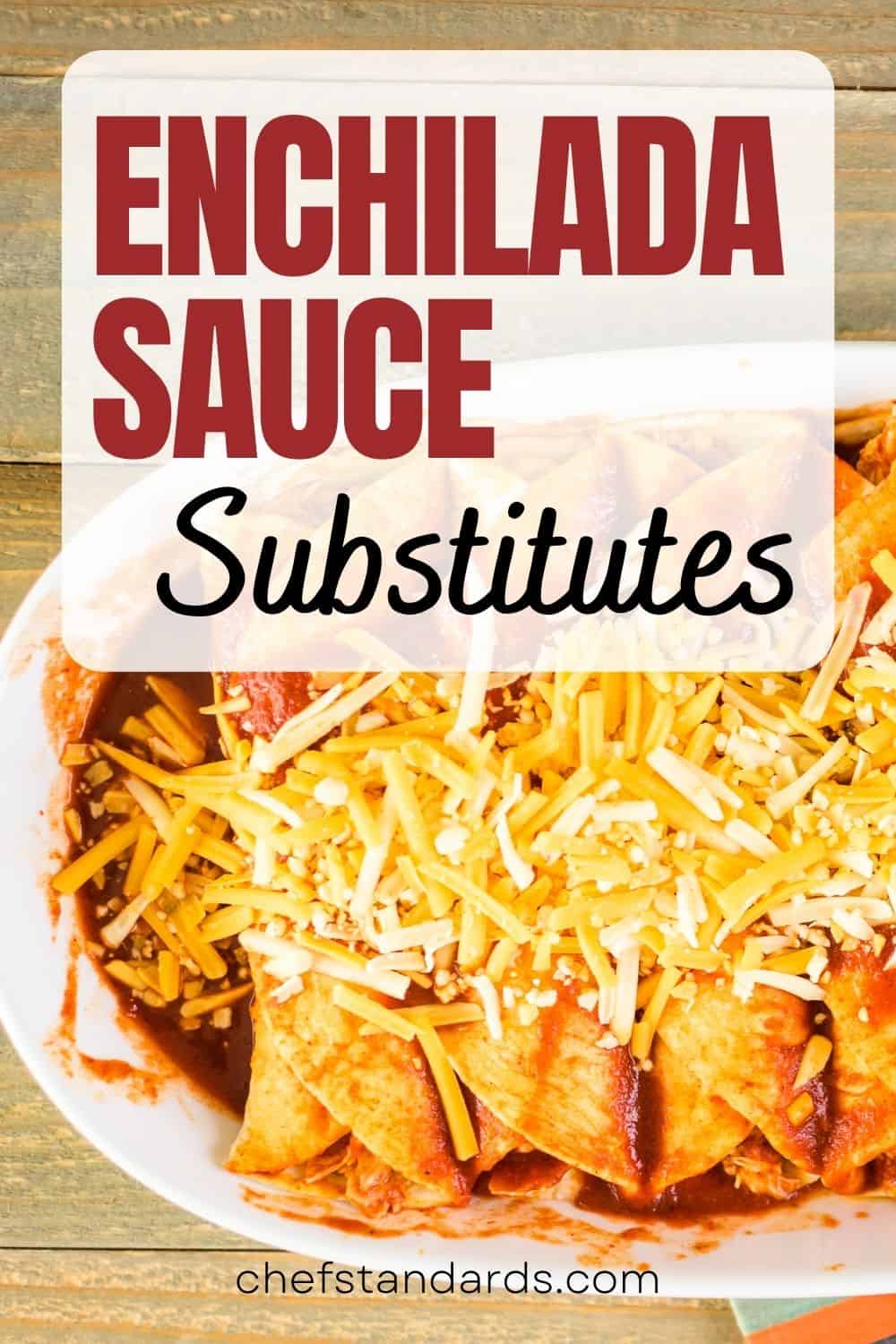A fan of Mexican cuisine and hot and spicy foods? You’ve come to the right place! Today, we are going to talk about one Mexican culinary classic, enchilada sauce.
More precisely, I am going to reveal to you how to successfully substitute this sauce with some other delicious and spicy ingredients.
So, no matter whether or not you like the flavor of the sauce or you just don’t have any at hand at the moment, there are eight great enchilada sauce substitutes waiting to enrich your delicious enchiladas and a few other spicy Mexican classics as well.
1. Taco Sauce

It is one of the most famous spicy sauces in the world of Mexican cuisine. Although it is mostly used as a condiment for tacos, it is no surprise to see it in many other Mexican dishes, including enchiladas.
Pros:
• More widely available than enchilada sauce
• Very versatile sauce
• Generally less expensive than enchilada sauce
Cons:
• Does not have the same depth of flavor or complexity
• Typically thicker than enchilada sauce
• Many commercial brands of taco sauce are high in sodium
How To Use It As a Substitute:
Although taco sauce is mainly enjoyed with tacos or as a dip with your tortilla chips, you can also use it in your enchiladas.
If you are planning to do so, you will have to buy a bit more of it so that you have enough to cover your enchiladas.
As I already stated, taco sauce is thicker than enchilada sauce. So, if you want to dilute it, you can do that by adding water or chicken broth to the sauce.
If you find that adding more liquid takes away the spiciness of the sauce, you can add some enchilada seasoning to make up for it.
Finally, when adding it to your recipe, start with ½ tablespoon and check if the flavor is as desired. If not, you can add more seasoning until you achieve the consistency you want.
2. Salsa Sauce
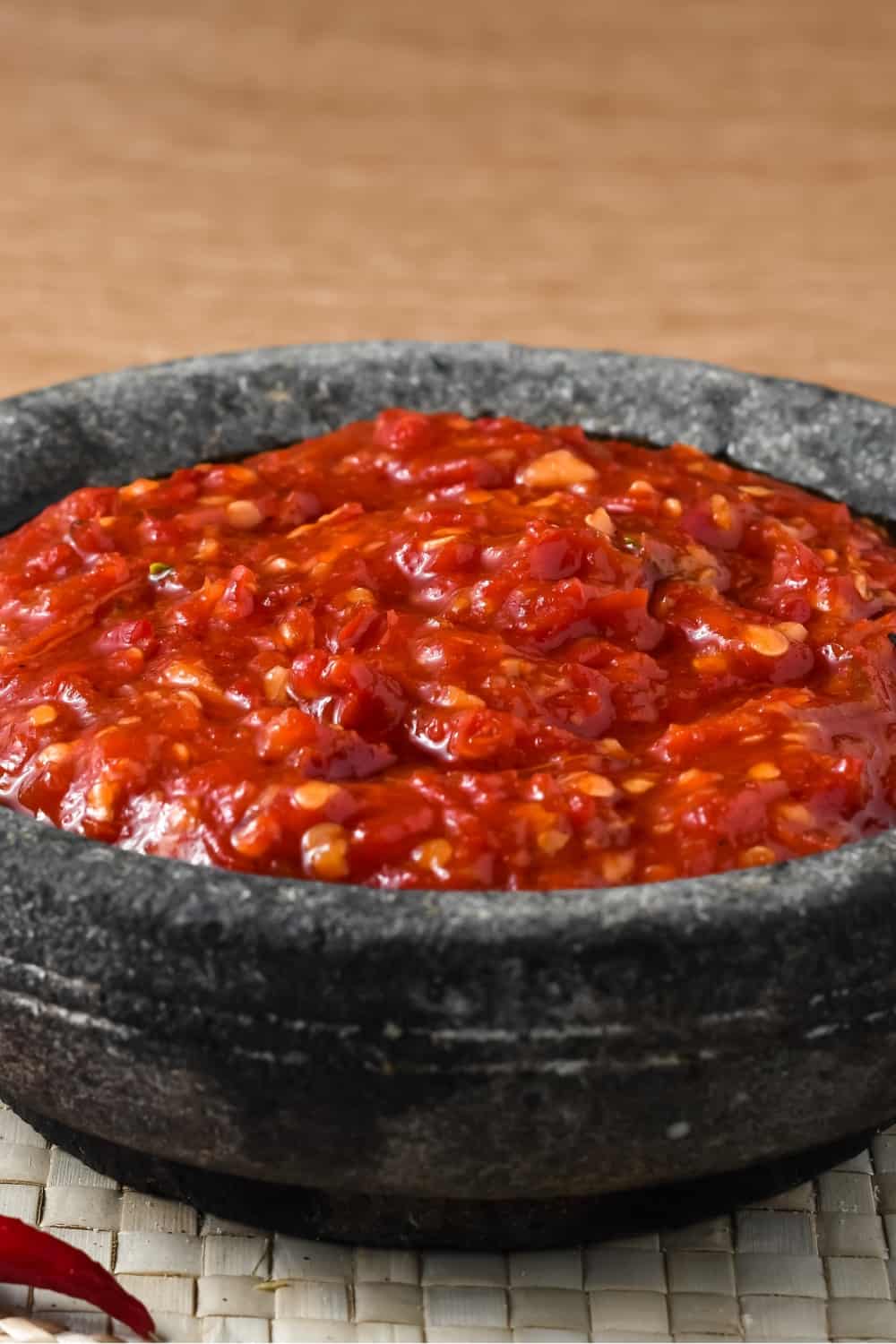
This is another Mexican classic and one of the favorites of those who crave a bit of spiciness. Salsa sauce is made from chopped tomatoes, onions, chili peppers, and cilantro, along with various seasonings, so now you can see why it’s worth it.
Pros:
• Can have a similar flavor profile to enchilada sauce, especially if it is a tomato-based salsa that is already seasoned with Mexican spices
• Lower in calories and fats
• More available than enchilada sauce in most grocery stores
Cons:
• Typically thinner than enchilada sauce
• Different level of spiciness (although it depends on the type and ingredients)
• May have a distinct tomato flavor that may not be desired in certain enchilada recipes
How To Use It As A Substitute:
There are a few types of salsa sauces and it is sometimes hard to choose the right one.
However, in this particular case, I would recommend that you use tomato-based salsa with Mexican spices, and the flavor will be as close as it can be.
In general, I mainly use salsa sauce in soups and stews, but I also sometimes use it as a dip or sauce for other dishes.
My recommendation is to use it in salads, as a side dish, on tacos, or tortillas. You can also add a few drops of lemon to make the mixture lighter.
If you choose to use it directly in your delicious enchiladas instead of in the main sauce, the process of making it is quite similar, although you will probably have to use a bit more because of the different textures.
Take note that you won’t get the same flavor and texture, but you can always experiment with some flavors in your kitchen.
3. Picante Sauce
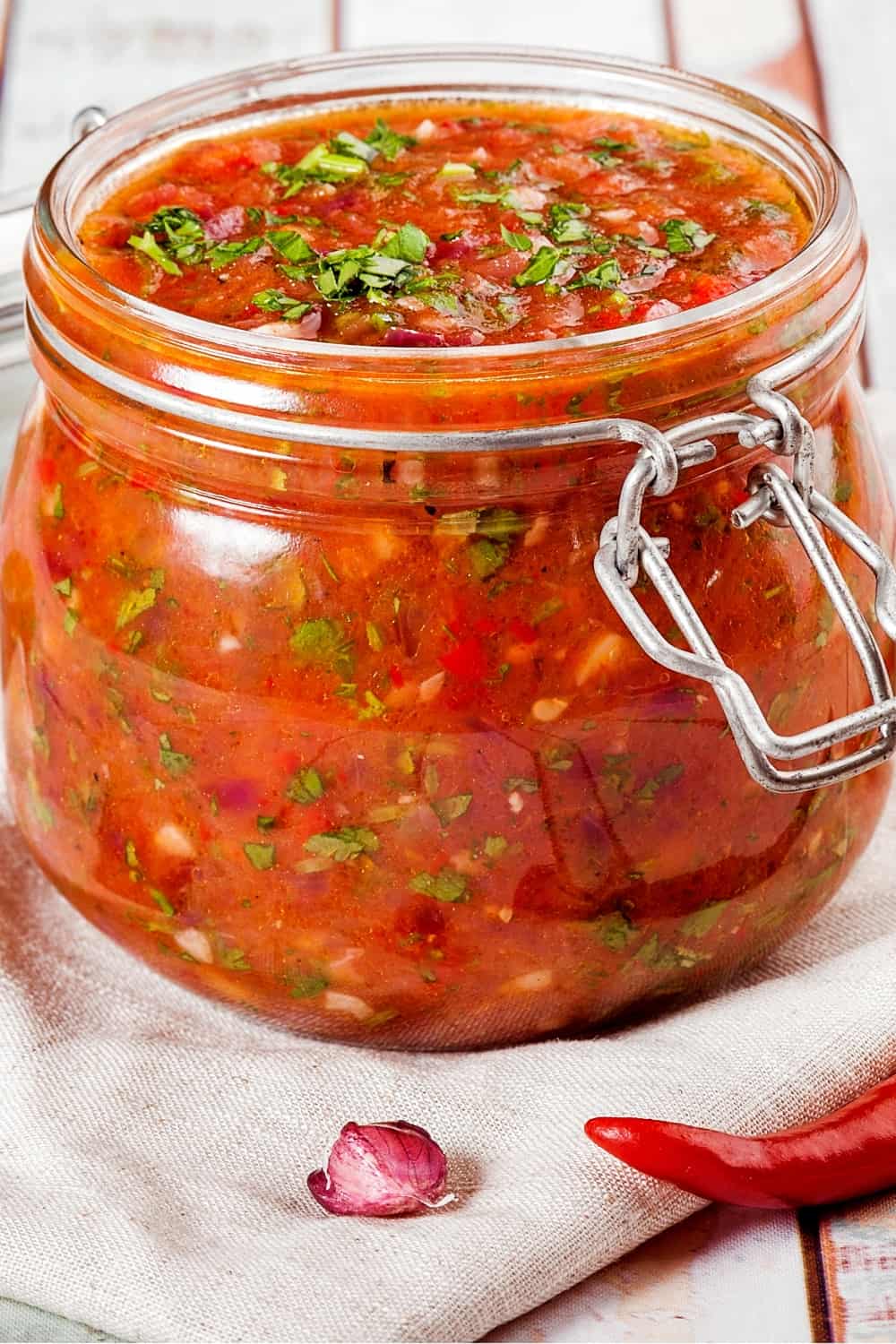
Picante sauce is really a classic and I personally use it in so many of my favorite Mexican dishes. This type of chili sauce is made from chopped chilies, tomatoes, and onions, and can serve as a great alternative.
Pros:
• Similar flavor profile to enchilada sauce, especially if it contains Mexican spices
• A very versatile ingredient that you can use in a variety of dishes
• More widely available in most grocery stores
Cons:
• Typically smoother and more blended than enchilada sauce
• Different level of spiciness and depth in flavor; in most cases, milder than enchilada sauce
• Some varieties of Picante sauce may contain vinegar, which can alter the flavor of your dish
How To Use It As A Substitute:
Picante sauce is really one of those ingredients that you can use in almost any type of Mexican dish.
From tacos and burritos to nachos, Picante sauce in the form of dipping sauce or topping can really make a difference for your spicy dish.
Of course, you can also use it in your enchiladas but take note that the flavor and texture won’t be quite the same.
Since Picante sauce is typically smoother and more blended than traditional enchilada sauce, you can add some additional ingredients such as tomato paste, diced tomatoes, or tomato sauce to thicken the Picante sauce.
When substituting, I personally always use the same amount of Picante sauce in my enchilada recipe.
However, in the world of cooking, nothing is limited, so you can always experiment to make your perfect spicy dish.
4. Ranchero Sauce
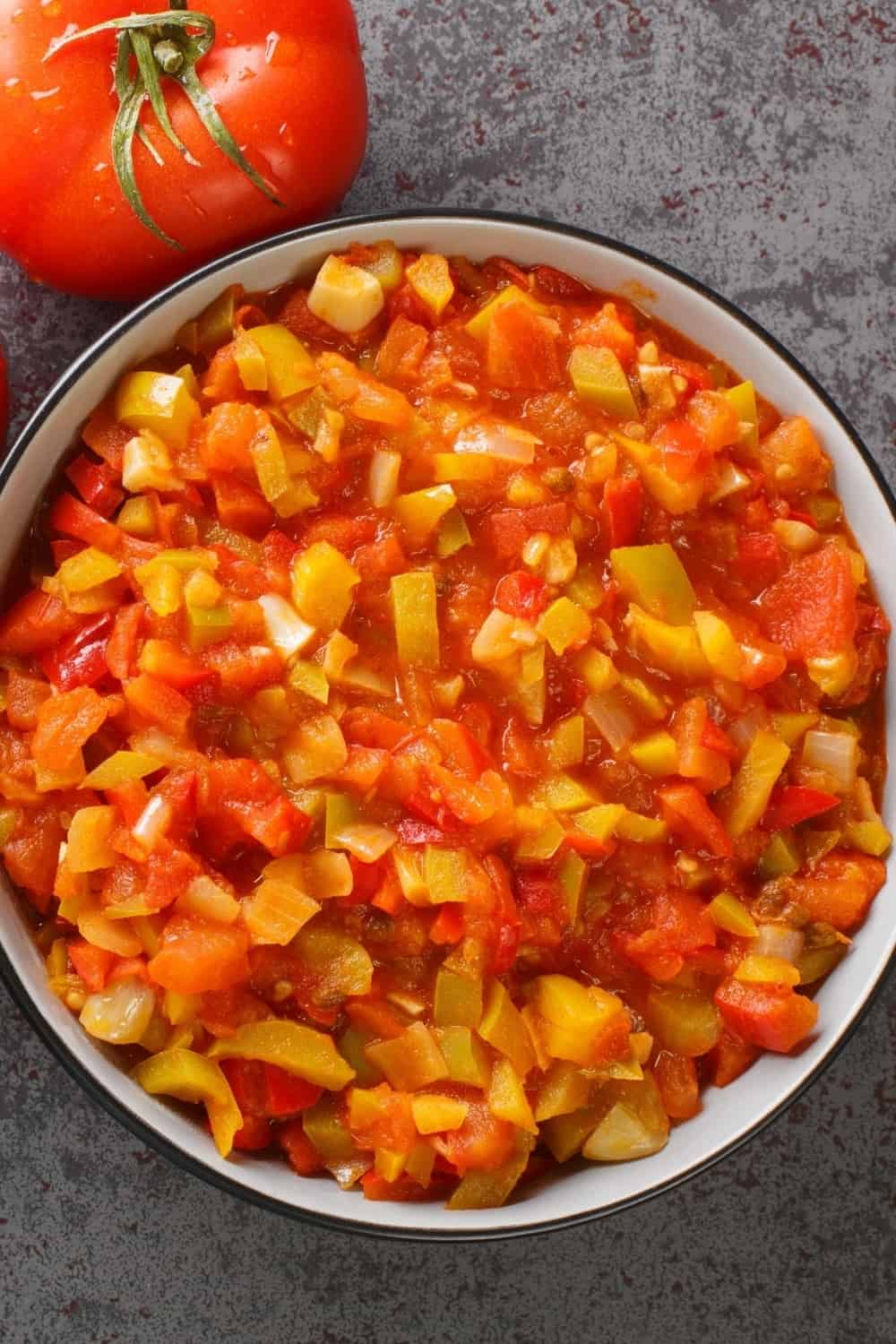
I’ve never tried it, but I’ve heard a lot of great feedback about this sauce, especially from those hardcore hot and spicy lovers. This Mexican-style sauce is known for its bold and spicy flavors, and you can use it as a substitute as well.
Pros:
• Ranchero sauce is very versatile and can be used in a variety of dishes
• You can easily make ranchero sauce at home
• The recipe for Ranchero sauce can be adjusted to personal taste preferences
Cons:
• Different flavor profiles and different levels of spiciness, i.e. Ranchero sauce is much spicier
• Ranchero sauce usually has a chunkier texture than enchilada sauce
• Depending on the recipe, it may require adjustments to the other ingredients to balance out the flavors
How To Use It As A Substitute:
If your intention is to add some extra flavor to your enchiladas or any other type of your favorite Mexican dish, then Ranchero sauce might be your best bet.
Unlike enchilada sauce, which can sometimes be sweet or even bland, this flavorful and spicy sauce certainly won’t disappoint.
You can use its amazing flavor powers to enrich various types of dishes, including tacos, and you can also use it as a dipping sauce to enjoy your favorite chips.
If your intention is to add it to your enchiladas, you can freely use the same amount of it, but take note that the flavor is not for the faint-hearted, so you may have to adjust the other ingredients in your recipe to balance out the flavors.
You can also use it in burritos since enchiladas and burritos are quite similar.
5. Sofrito Sauce
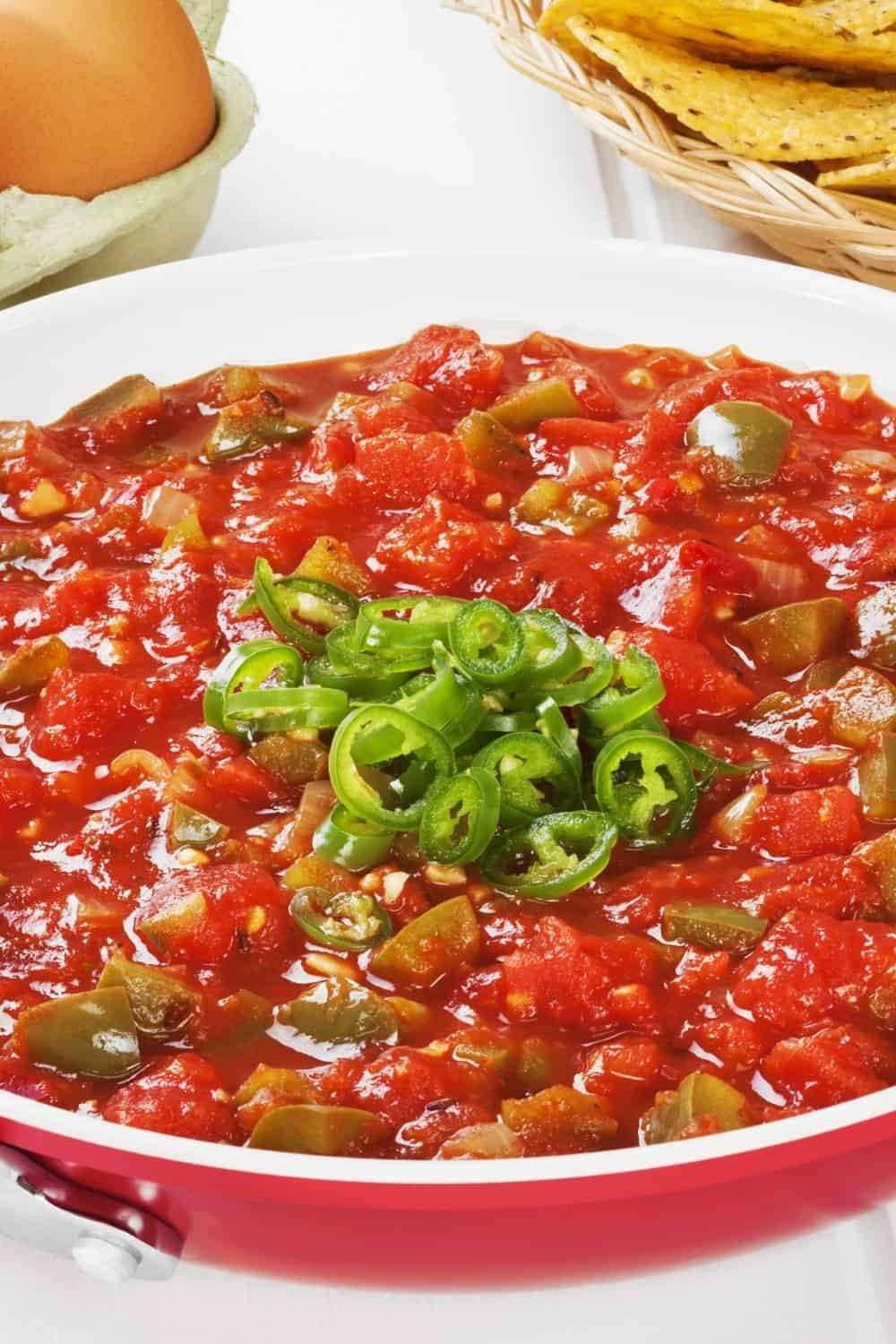
This type of sauce is not as well-known as the previous ones, but it has so much to offer. It is a traditional sauce in Latin America but is also often used in Spanish and Caribbean cuisine.
If you know how, you can also use it as an enchilada sauce substitute.
Pros:
• Adds a unique and complex flavor profile to dishes, with a blend of aromatics and herbs.
• Can be used in various types of dishes
• Can be a healthier option than store-bought enchilada sauce, as it is typically made with fresh ingredients
Cons:
• The flavor profile is different and Sofrito sauce is quite milder when compared with enchilada sauce
• It can be rather time-consuming to make Sofrito sauce from scratch
How To Use It As A Substitute:
I am a fan of hot and spicy foods, so Sofrito sauce is rarely an option for me because it is quite mild.
However, if you are a fan of enchilada but your taste buds are too sensitive to heat, Sofrito sauce might be a great option.
But since its taste and texture are not quite the same, you may have to adjust some things. To create a more traditional enchilada flavor, add some ingredients, including cumin, chili powder, and chicken stock.
Also, it is not a bad idea to puree the Sofrito sauce in a blender or food processor to achieve a smoother texture.
The great thing about Sofrito sauce is the fact that only the sky’s limit, as you can add it to various types of dishes, including stews and soups, as well as rice and beans dishes.
Also, your meat will be delighted to cover it with some marinade made from this amazing sauce.
6. Tomato Sauce
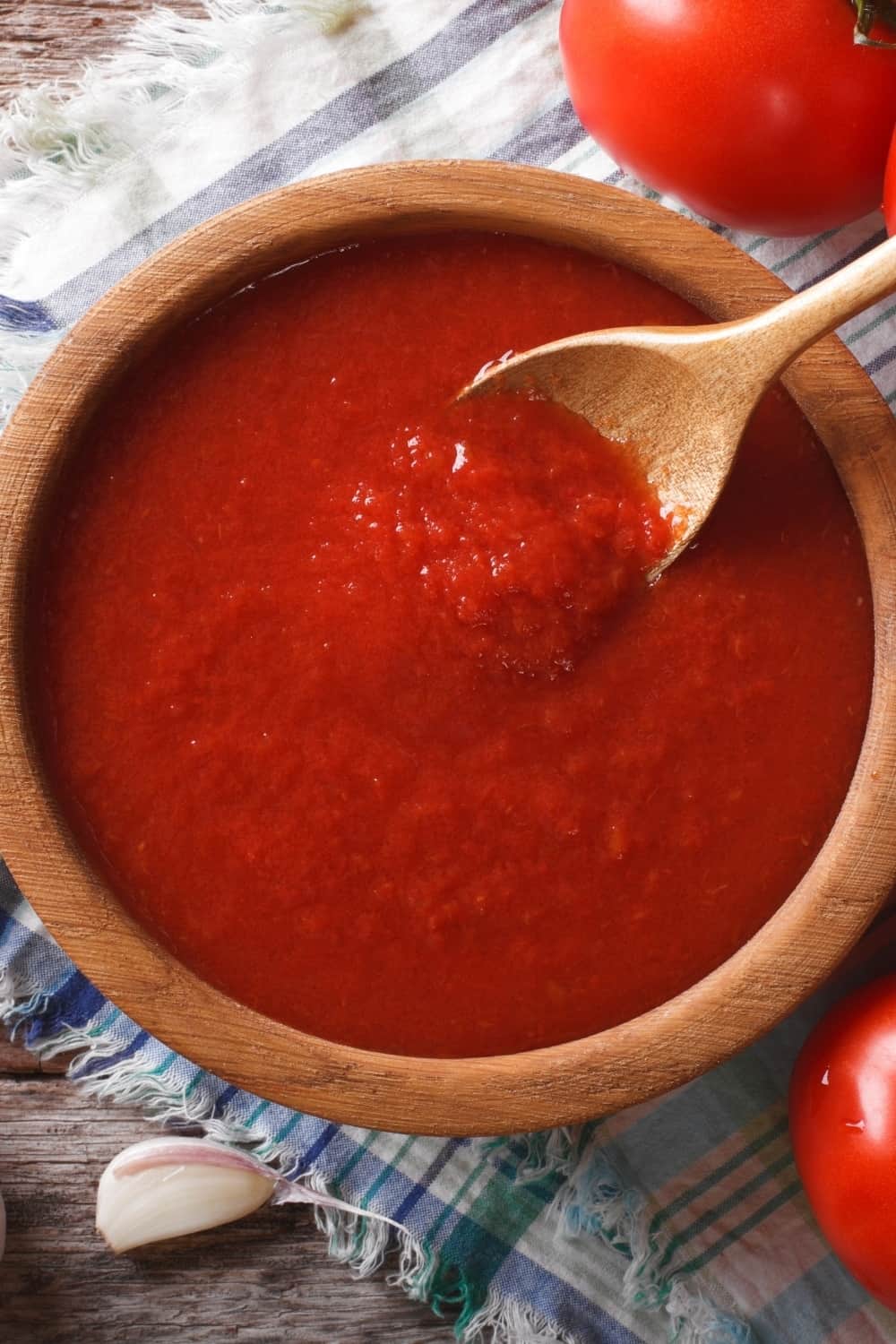
From pasta to pizza, tomato sauce is the one ingredient that we all use frequently. In my cooking practice, I can bearly remember a day when I didn’t use some of it. But did you know that it can be a good enchilada sauce substitute as well?
Pros:
• It is readily available in most grocery stores and supermarkets
• One of the most versatile ingredients in cooking
• Also quite healthy since it is full of antioxidants, vitamins, and minerals
Cons:
• It has a different flavor profile and may not have the same depth
• Typically thinner and less dense than enchilada sauce
• It requires additional seasonings to achieve the required flavor profile
How To Use It As A Substitute:
One of the main ingredients of enchilada sauce is tomatoes, so it is no surprise that tomato sauce can work as a substitute.
However, you will have to make some adjustments. My recommendation is to add 1 to 2 tablespoons of enchilada seasonings or Mexican seasonings to the sauce.
I always add some garlic and chili flakes to add the needed heat and make it more complex in flavor because tomato sauce has a more simple flavor profile, and we don’t want that.
It is always best to heat the sauce separately first, and then add your preferred spices to see if you are dealing with the right flavor.
This is especially the rule if you are adding tomato sauce to your enchiladas, but it is also important in some other types of dishes, such as tacos, casseroles, etc.
See Also: 10 Exciting Substitutions For Sun-Dried Tomatoes
What About Green Enchilada Sauce And Homemade Enchilada?
My final two recommendations are quite obvious really, and the most logical one is to make some enchilada sauce in your own kitchen or wherever you are comfortable.
But did you know that there is also a green variety of enchilada sauce? Yes, and although red enchilada is more popular, I would dare you to try its green relative because it can give amazing flavor traits to some of your recipes.
1. Green Enchilada Sauce
Both types of enchilada sauce, aside from color (green and red) have some major differences.
Namely, when you make green enchiladas, you typically use tomatillos, green chilies, and sometimes cilantro, while in red enchilada sauce, red chilies, such as ancho or guajillo peppers, are the main stars.
Because of that, their flavor profiles are slightly different, i.e. green enchilada sauce has a tangy, slightly tart flavor that comes from the tomatillos and green chilies, while red enchilada sauce is richer and spicier in flavor.
However, this doesn’t prevent you from using them interchangeably with just a few simple adjustments.
When I use green enchilada sauce instead of red in my enchiladas, I always add more garlic or cumin to balance out the tartness.
However, I once did only that and forgot that green enchilada sauce has a thinner consistency, so my enchiladas ended up being a watery catastrophe.
So, always remember to adjust the amount of sauce when doing this, or use a thicker green enchilada sauce.
2. Your Own Saucy Masterpiece

Enchilada Sauce And Homemade Enchilada
If you are not a fan of all additives and preservatives with which store-bought sauces are packed, or if you just want to play around in your cuisine a little, then you might consider making your own homemade enchilada sauce.
All you have to do is to follow my recipe below and your enchilada will be grateful for providing them with such a sauce.
Ingredients
- 2 tbsp olive oil
- ¼ cup chili powder
- 2 tbsp all-purpose flour
- ½ tsp ground cumin
- ½ tsp garlic powder
- ¼ tsp dried oregano
- 2 cups vegetable stock
- Pinch of sea salt
Instructions
First, heat the oil in a saucepan over medium-high heat, and then add flour to cook for one minute, while whisking constantly.
After that one minute, add spices and seasonings (chili and garlic powder, oregano, and cumin) and cook for 1 additional minute while whisking constantly.
Now, pour in the stock, whisking constantly to combine until no lumps remain, and continue cooking until the sauce starts simmering.
Reduce the heat to medium-low to maintain the simmer for about 10-15 minutes, until it has thickened.
Add a little bit of salt to provide it with some extra flavor; although this one is up to your preferences, I would recommend you add ½ teaspoon for the best flavor.
Use it in your favorite recipe right away and enjoy!
Notes
In this recipe, it is best that you use American chili powder, over some other stronger types of powder, like, for example, cayenne powder.
You can thicken the sauce with a cornstarch slurry, but you can freely use an all-purpose- gluten-free flour blend in place of all-purpose flour.
If you don't want to use the sauce right away, let it cool to room temperature, and then transfer it to a food storage container and refrigerate it for up to 5 days.
